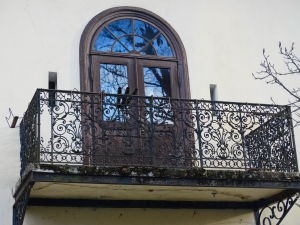Holiday Home Security and Lock Maintenance
Lock maintenance
The summer season is well and truly over as the sky turns grey and the cold, wet weather moves in. If you have a holiday home that you let out during the summer months, now is the perfect time to review the condition of your locks and security.

In my job I see holiday homes catering for all budgets, from basic amenities, to home from home comfort with installed luxuries like internet connection and satellite TV. But no matter what the level you are offering, it is always embarrassing when your customer’s holiday is set back by problems with the locks, and they find themselves locked out (or in some cases, locked in) because the locks have not been maintained properly.
Most property service companies are reactionary, so even though the problem will be resolved, it can still lead to you having to refund a customer and can even mean you have to cancel bookings, which has the knock on effect of possibly losing you recommendation business in the future. While maintenance is not an absolute guarantee that nothing will go wrong, you can at least rest in the knowledge you have done all you can to give your customers a hassle free holiday, and you not wasting time chasing property managers to get the job done.
Holiday homes with multi-point locking systems on their doors are probably the most likely to create problems, particularly if they are near the sea. Moisture creates rust, especially when these mechanisms are set into wooden doors and customers slam doors or leave them open to blow in the wind. These doors should have a service at least once a year, but preferably at the start and end of high season.
Yale locks seem to cause no end of problems with people managing to deadlock the door while it is open and then slam the door, effectively locking them in unless someone unlocks the door from the outside. Standard Yale type locks should be replaced with BSI3621 models to avoid this and other problems.
Mortice locks can throw up a problem where a part inside slips and it becomes impossible to insert the key. These locks should be checked by removing from the door and checking the tightness of the screws as wooden door expansion and contraction can loosen these screws.
These are just some of the problems to be avoided. There are many more. But the good news is that you can guard against all this for free. The cost of routine maintenance carried out by a professional locksmith is a business expense and therefore can be claimed as part of your expenses when submitting tax returns, effectively making the work free.
AC Locksmiths is ready to take on regular contract work to maintain the locks of your holiday home. I can liaise with your letting company to coincide maintenance with changeover periods and help prevent the problem that can mean your customers demand their money back. Should you require any more information on the above subjects, please contact via any of the methods listed on the contacts page.
Thanks for reading.
admin October 22, 2015
Holiday home security / Home maintenance / Lock maintenance / Rented property /
